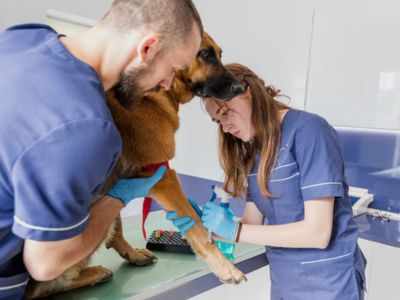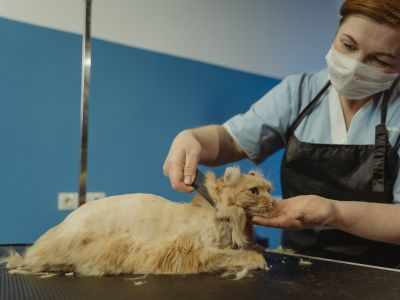Pet care has come a long way in recent years, with advanced surgical procedures and specialized grooming services now available to ensure our furry companions lead healthy, comfortable lives. Whether your dog needs orthopedic intervention, your cat needs regular grooming, or your pet requires soft tissue surgery, understanding these services can make all the difference. This guide explores the essentials of dog ACL surgery, cat grooming services, and pet soft tissue surgery, giving you a clearer perspective on how to provide the best care for your beloved pets.

Dog ACL Surgery: What Every Pet Owner Should Know
One of the most common orthopedic injuries in dogs is a torn ACL, or anterior cruciate ligament. In dogs, this ligament is more accurately referred to as the cranial cruciate ligament (CCL), but the term “dog ACL surgery” is widely used by pet owners and veterinarians alike. ACL injuries can significantly impair a dog's ability to walk, run, and even stand, making surgical intervention a critical part of treatment.
Causes and Symptoms of ACL Tears in Dogs
ACL injuries in dogs often result from sudden movements, trauma, or even gradual wear and tear. Certain breeds, such as Labradors, Rottweilers, and Golden Retrievers, are more predisposed to ACL injuries. Obesity and high-impact activities also increase the risk.
Signs your dog might need dog ACL surgery include:
Limping or lameness in one leg
Difficulty rising or jumping
Swelling around the knee joint
Audible clicking or popping sounds while moving
Reluctance to bear weight on the affected leg
Types of Dog ACL Surgery
There are several surgical techniques used to repair a torn ACL in dogs:
Tibial Plateau Leveling Osteotomy (TPLO) – A popular method where the tibia is cut and rotated to change the dynamics of the knee joint.
Tibial Tuberosity Advancement (TTA) – This method involves repositioning the tibia to stabilize the joint.
Extracapsular Repair – This technique uses sutures outside the joint to mimic the function of the torn ligament.
Each dog ACL surgery option has its pros and cons, and the choice often depends on the size of the dog, activity level, and overall health.
Recovery and Aftercare
Post-surgery recovery is crucial. Dogs typically require:
Restricted activity for 8–12 weeks
Physical therapy
Pain management
Regular follow-up visits
With the right care and rehabilitation, most dogs regain near-complete mobility following dog ACL surgery.
Cat Grooming Services: Keeping Your Feline Happy and Healthy
While cats are generally known for self-grooming, professional cat grooming services are essential for maintaining optimal hygiene, especially for long-haired breeds or senior cats. Grooming is more than just a luxury—it’s a necessary part of your cat's health and well-being.

Why Cat Grooming Services Matter
Professional cat grooming services help prevent a variety of health issues, such as:
Matted fur, which can cause skin irritation and infection
Hairballs from excessive self-grooming
Overgrown nails that affect mobility
Ear infections from wax and debris buildup
Flea and tick infestations
Even short-haired cats benefit from occasional cat grooming services to remove excess fur and reduce shedding.
What to Expect from Cat Grooming Services
A professional cat grooming session may include:
Brushing and de-shedding
Bathing with cat-safe shampoos
Nail trimming
Ear cleaning
Sanitary trims
Flea and tick checks
Many grooming centers also offer sedation options for anxious or aggressive cats, ensuring a safe experience for both the cat and the groomer.
Benefits of Regular Grooming
Routine cat grooming services offer numerous benefits, including:
Healthier skin and coat
Early detection of lumps, bumps, or parasites
Less shedding around the home
Stronger bond between cat and owner
For optimal results, experts recommend professional cat grooming services every 6–8 weeks, depending on your cat’s breed, lifestyle, and health.
Pet Soft Tissue Surgery: Addressing Internal Health Needs
While orthopedic procedures like dog ACL surgery are vital, many pets also require internal surgeries to address non-bone-related issues. This is where pet soft tissue surgery comes into play. These surgeries involve the skin, muscles, organs, and other soft tissues of the body.
Common Types of Pet Soft Tissue Surgery
Pet soft tissue surgery covers a wide range of procedures, including:
Tumor removal
Bladder stone removal
Foreign object retrieval from the stomach or intestines
Hernia repair
Laceration repairs
Abscess drainage
These surgeries are often critical in saving a pet’s life or improving their quality of life.
When is Soft Tissue Surgery Needed?
You may need to consider pet soft tissue surgery if your pet shows signs such as:
Vomiting or diarrhea
Swollen or painful areas on the body
Blood in urine or stool
Difficulty breathing or urinating
Visible lumps or masses
Non-healing wounds
Your veterinarian will perform diagnostic tests such as X-rays, ultrasounds, or bloodwork to determine the need for pet soft tissue surgery.
Recovery and Monitoring
After a pet soft tissue surgery, recovery varies depending on the complexity of the procedure. General guidelines include:
Limited physical activity for 10–14 days
Proper wound care
Medications for pain and infection prevention
Close monitoring for any signs of complications
Most pets bounce back quickly with the right care, and follow-up visits are crucial to ensure proper healing.
Combining Care: A Holistic Approach to Pet Wellness
While each service—dog ACL surgery, cat grooming services, and pet soft tissue surgery—serves a unique purpose, they are all part of a broader approach to holistic pet care. By understanding when these services are necessary and how they benefit your pet, you can proactively manage their health and happiness.
Working with the Right Veterinary Professionals
Choosing a reputable veterinary clinic or pet hospital ensures your pet receives top-notch care. Look for providers that specialize in dog ACL surgery, offer dedicated cat grooming services, and have a team skilled in performing complex pet soft tissue surgery. Certifications, reviews, and facility cleanliness are strong indicators of quality.
Preventative Measures to Reduce Risks
While not all issues can be prevented, a few steps can lower the likelihood of your pet needing surgical intervention:
Regular vet checkups
Proper diet and weight management
Controlled physical activity
Timely grooming and parasite control
Monitoring for any behavioral or physical changes
Combining preventive care with responsive treatment ensures your pets enjoy long, active lives.
Final Thoughts
Pet ownership comes with immense joy and significant responsibility. Knowing about crucial services like dog ACL surgery, cat grooming services, and pet soft tissue surgery empowers you to make informed decisions when your pet needs help. These interventions, while sometimes daunting, often result in substantial improvements in quality of life for your furry friend.
Investing in professional care—whether it’s a surgical procedure or routine grooming—is a testament to the love and commitment you have for your pet. Be proactive, stay informed, and don’t hesitate to consult your veterinarian when it comes to your pet’s health. After all, a well-cared-for pet is a happy pet.
Write a comment ...